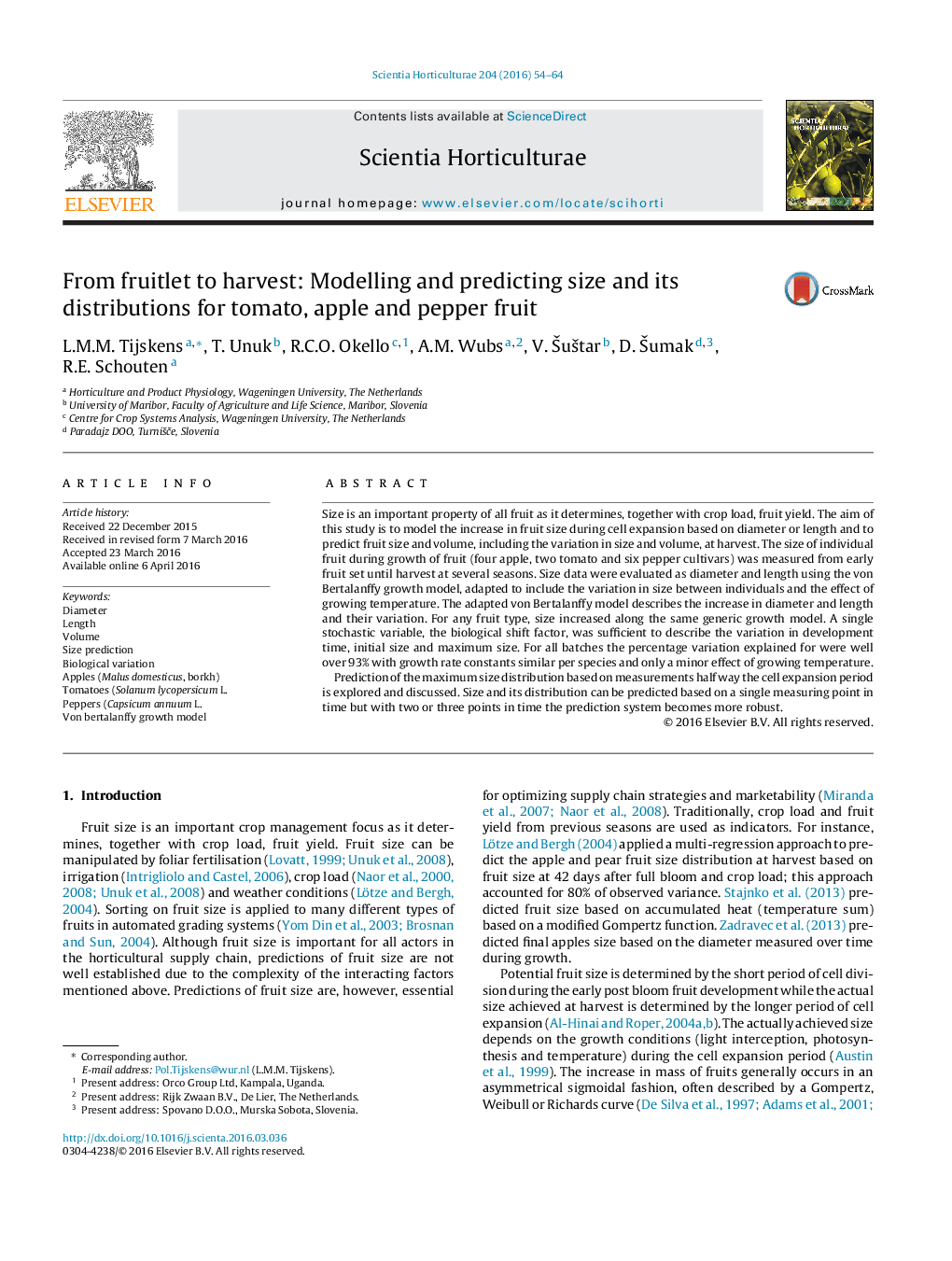| Article ID | Journal | Published Year | Pages | File Type |
|---|---|---|---|---|
| 4566087 | Scientia Horticulturae | 2016 | 11 Pages |
•The diameter and length of fruit increase towards an asymptote according to a first order production model.•A single stochastic variable was sufficient to describe the variation in development time, initial size and maximum size.•Apples, tomatoes and peppers follow the same generic mechanism.•Rate constants are highly similar for a species, regardless of the growing circumstances.•Converted to volume, the usually observed sigmoidal behaviour is obtained.•Mean size and its variation at harvest can be predicted early in the development.
Size is an important property of all fruit as it determines, together with crop load, fruit yield. The aim of this study is to model the increase in fruit size during cell expansion based on diameter or length and to predict fruit size and volume, including the variation in size and volume, at harvest. The size of individual fruit during growth of fruit (four apple, two tomato and six pepper cultivars) was measured from early fruit set until harvest at several seasons. Size data were evaluated as diameter and length using the von Bertalanffy growth model, adapted to include the variation in size between individuals and the effect of growing temperature. The adapted von Bertalanffy model describes the increase in diameter and length and their variation. For any fruit type, size increased along the same generic growth model. A single stochastic variable, the biological shift factor, was sufficient to describe the variation in development time, initial size and maximum size. For all batches the percentage variation explained for were well over 93% with growth rate constants similar per species and only a minor effect of growing temperature.Prediction of the maximum size distribution based on measurements half way the cell expansion period is explored and discussed. Size and its distribution can be predicted based on a single measuring point in time but with two or three points in time the prediction system becomes more robust.
